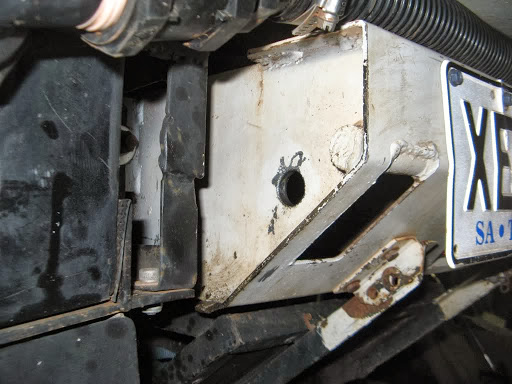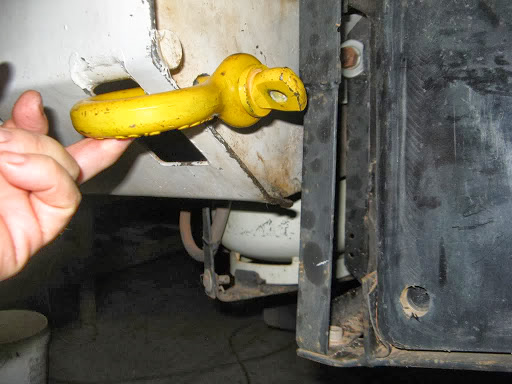Being an electronics engineer it was inevitable that I would make and installed lots of electrical/electronic modifications and additions to our Oka.
None of these mods affect the basic functionality of the Oka, in fact there is only one essential electrical item which keeps the engine running or not, which is the fuel cut off solenoid on the injector pump.
As long as you can start the engine, the solenoid wire with 12v applied is the only electrical thing needed to keep it running. See this post for the minimum electrics to start and keep the engine running.
Electrical Mods to our Oka (** indicates my own design/construction)
Mods which relate to Driving
- Smart alternator regulator for our 120A alternator (Sterling AR12VD)
- Triple batteries with automatic charge connection and manual paralleling switches**
- Supercharge Gold MF95D31R (760 CCA) starter battery
- 2 x Supercharge MRV70 (105 AH, 760 CCA) Allrounder (Starting and Deep Cycle) house batteries
- Solar panels (200W, 10 x 20W) and multiple battery charge controller**
- Charge monitoring display system (current and voltage)*
- Start Lock Out system**
- Prevents the engine from being started until an enable button is pressed, after the ignition is turned on
- Fitted with an emergency engine stop button
- Reversing and forward facing (for seeing over crests) cameras and 9 inch LCD display
- Wiper delay system**
- 6 delay periods
- 1 or 2 wipes per cycle
- Dashboard electronics**
- Voltage and charge current meters switchable to each battery (LCD and LED)
- GPS PSU
- Turbo Timer
- Headlight/Step/Vent/Pump “Left On” reminder system
- Laptop PSU for moving map system**
- Remote central locking doors**
- Fitted to all 3 doors, with interlocks so that any internal door handle can lock and unlock all doors**
- Electric windows on both front doors**
- Remote switching of fridge dc**
- Allows fridge to be switched off from cabin when stopped (eg for fuel), to reduce battery load. Normally the fridge runs from 240v ac via the inverter while travelling as it’s more efficient than dc, less cable losses. Solar panels provide power when the alternator is not charging
- Automatic inhibit of Water Pumps**
- Inhibits pumps when the ignition is ON, to prevent accidental pumping out of water if a pipe leaks or breaks while travelling
- Diesel Transfer Pump to transfer fuel from rear to side tank
Mods which relate to the Motorhome
- System switch functions for all rear electrical equipment**
- Pumps, Lights, Fans
- Water Level Meters for both main water tanks**
- Fridge/freezer monitor and alarm system**
- Display of fridge and freezer temps
- Over temp and flame failure alarms
- Indication of energy source (ac, dc or gas)
- Note: Fridge is normally powered from ac inverter while travelling
- Fridge Fan to circulate cold air, stops when door is opened**
- Fridge LED Lights which operate when door is opened**
- Window Fans to cool us at night (speed controlled from quiet breeze to gale force)**
- 300W Sine Wave Inverter (Jaycar) with RCD
- Soldering Iron, 24v 60W, temperature controlled, runs from dc-dc converter**
- Drill battery charger, 24v, microcomputer controlled
- Runs from same dc-dc converter as soldering iron
- Computer systems
- GPS moving map system based on MacBook, USB GPS and Oziexplorer running under VirtualBox and XP
- 17 inch LCD display mounted on engine cover
- NextG Phone/Modem,( plugs into MacBook), with external whip and Yagi antennae
- 2 x 40W channel HiFi system switchable from radio to computer**
- Smoke Alarm inhibitor**
- Prevents activation while cooking. Manual reset or automatic reset after 40 minutes
- NiCd/NiMH Battery Charger (up to 10 batteries at once)
- Rechargeable Dolphin LED Torch using 8 1/2 W LED’s and 6v SLA battery**
- Dustbuster converted to run from 12v (internal 12v to 6v switching converter)**
- HF Radio, (Codan 7727 with VKS737 frequencies)
- Modified to receive ABC and BBC shortwave broadcasts
- Allows transmit/receive on the 40 meter (7 MHz) amateur band (call sign VK5MDR)**
- Frequencies can be selected via an external VFO**
- Allows broader range of emergency frequencies
- Jenal SC2 microphone fitted to allow direct RFDS connection via Selcall though VKS bases**
- Tapped whip and 9m Super Rod antennae
- SW Battery Radio
- LED Lights**
- External LED camping lights
- Internal LED lights
- Automatic porch/step lights (comes on at dusk when door is opened)
- Fridge dc low voltage cut off**
- Roof Vent fan speed control**
- Evaporative air conditioning controls**
- Controls small evaporative a/c for use when the engine is off
- Provides automatic shots of water to keep the evaporator pads damp instead of a continuous supply, to save water. Uses a timer to control a solenoid valve from the pressurised water supply





















